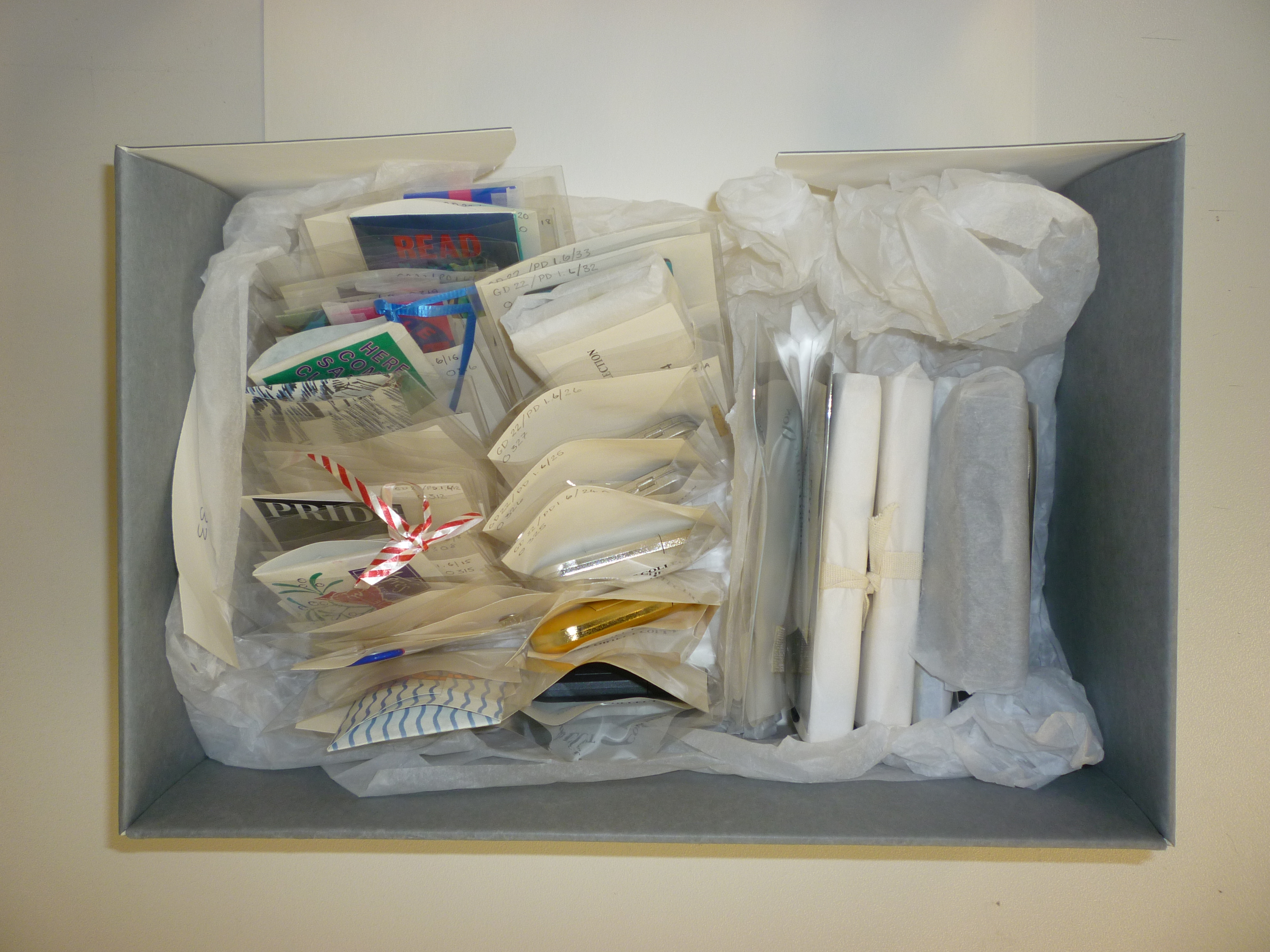Conservation of Plastics
The deterioration of plastics is ongoing and irreversible, therefore, preventive care is the best option for this type of material. This involves choosing the best possible storage conditions and handling practices to slow down deterioration and reduce the risk of further damage.
Handling
Plastics should be handled using nitrile gloves. Cotton gloves should not be used as this can leave specks of lint on plastics that have become tacky.
Environmental conditions for plastics
Plastics should be stored in a cool, dark, dust-free area. The temperature should be kept at 20 degrees centigrade and relative humidity at 30%-50%.
All UV light should be filtered out and light levels should be kept low during display.
Storage
Plastics should be stored on shelves with good ventilation. The object should not be stored in completely sealed boxes as acidic vapours released from the object will become trapped and result in a concentration of acids. Plastics can be wrapped in acid-free tissue, however, this is problematic as degrading (and tacky) plastics may become stuck to the tissue.
It is best to store similar plastics together as different plastics will emit different gases which may adversely affect other objects. This is not always possible; however, an activated charcoal cloth can be used to absorb any vapours released from the plastics and prevent them from harming other materials in close proximity to the object.
Plastic objects should be regularly inspected for signs of deterioration, such as crazing, discolouration or tackiness. If degradation is suspected, the object should be isolated from other objects.
Plastic objects in the HIV/AIDS collection
The plastics in this collection are relatively good condition. However, the storage materials used were not of sufficiently high specification. To improve this, the following actions were carried out:
- holes were cut in to the side of the box to increase ventilation,
- an activated charcoal cloth was used to line the bottom of the box and absorb any acidic vapours,
- card walls were used to separate different objects to aid in locating the objects and reduce handling,
- items were placed in inert polyester pockets with one edge left open to protect the object, but allow ventilation.
The photographs below show plastic objects before treatment (left) and after treatment (right).
 |
Designed by the Learning Technology Section, © The University of Edinburgh

